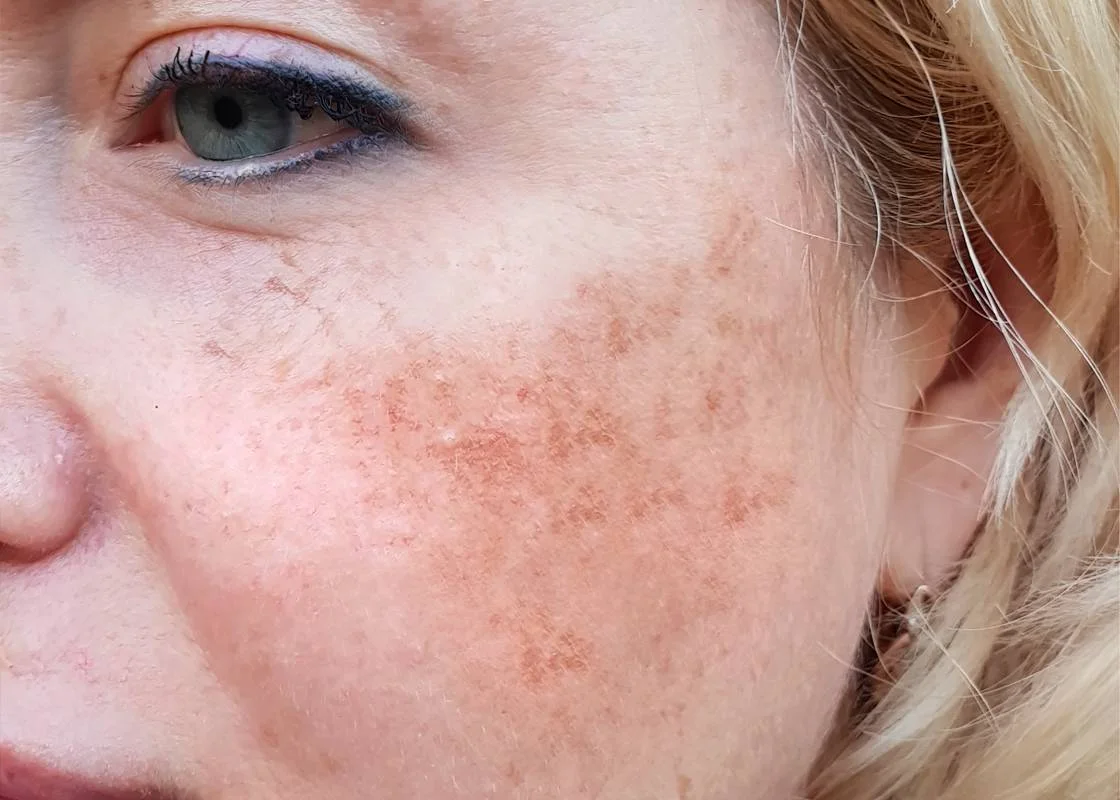
Melasma is a common skin condition characterized by brown or grayish patches, typically appearing on the forehead, cheeks, upper lip, or nose. These uneven pigment spots can be unpredictable—showing up suddenly, darkening with sun exposure, or persisting after hormonal changes. While melasma is not medically harmful, it can be frustrating and challenging to treat without professional expertise. At Aura Med Spa in Bellaire, TX, we take a tailored, strategic approach to help reduce pigmentation and restore a more even skin tone—no guesswork involved.
Melasma can affect anyone, but certain factors increase the likelihood. Genetics plays a role—if close family members have melasma, you may be more prone. Sun exposure stimulates melanin production and triggers pigment in sensitive skin. Hormonal changes from pregnancy, birth control, or hormone therapy can elevate estrogen and progesterone. Medium to darker skin tones (Fitzpatrick III–VI) are at higher risk. Heat and light exposure can also worsen melasma. Recognizing these factors is key to effective management.
Melasma presents differently from person to person, but it typically appears in symmetrical patches across sun-exposed areas of the face. Common characteristics include:
A proper diagnosis typically involves a visual exam and, in some cases, assessment under a Wood’s lamp. This helps determine how deep the pigment is within the skin layers and what treatment path will be most effective.
Because melasma is often influenced by both surface triggers and internal factors, we take a customized, tiered approach to treatment. A combination of therapies is often more effective than any one alone.
Understanding the different types of melasma can help you identify its patterns and determine the best approach to manage it effectively. Here are the main types:
Melasma is a form of hyperpigmentation that can be onset by several factors, including sun exposure, hormonal changes, skin inflammation, and medication side effects.
Melasma treatments aim to either reduce existing pigment, slow new melanin production, or support healthy skin turnover. Topicals lighten pigment gradually over weeks. Chemical peels and microneedling resurface the skin, promoting renewal and pigment fading. Laser and light therapies help scatter deeper pigment clusters, while PRP nourishes and strengthens the skin to improve evenness. Results are cumulative and depend on consistency, sun avoidance, and proper pairing of treatment methods.
Consistent, ongoing care is essential for preventing the recurrence and worsening of pigment rebound. To maintain and protect your progress:
In many cases, melasma improves once hormonal influences are addressed, but recurrence is possible. We’ll help you build a realistic plan for prevention and support you in maintaining a more even, confident complexion long term.


Let’s get in touch!